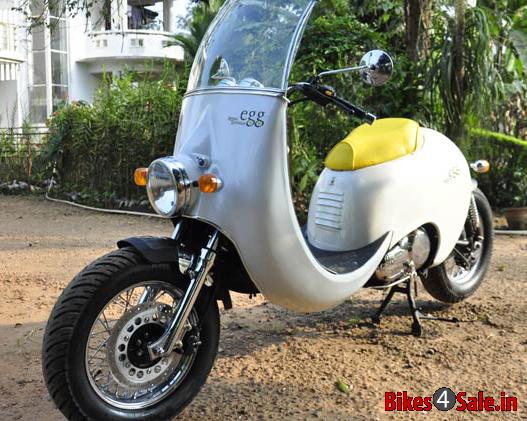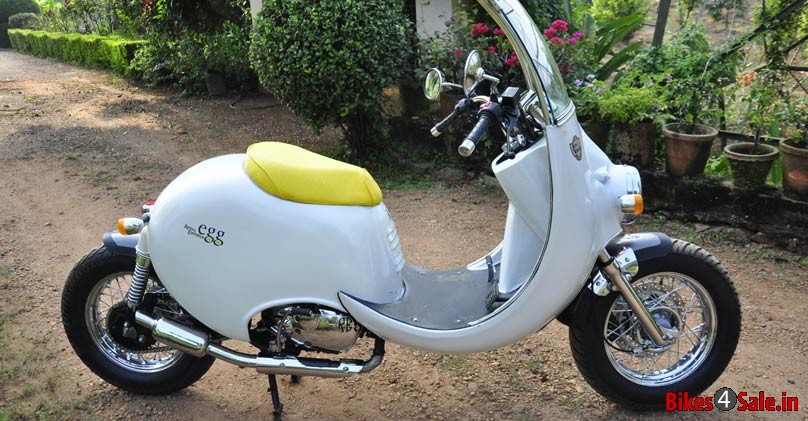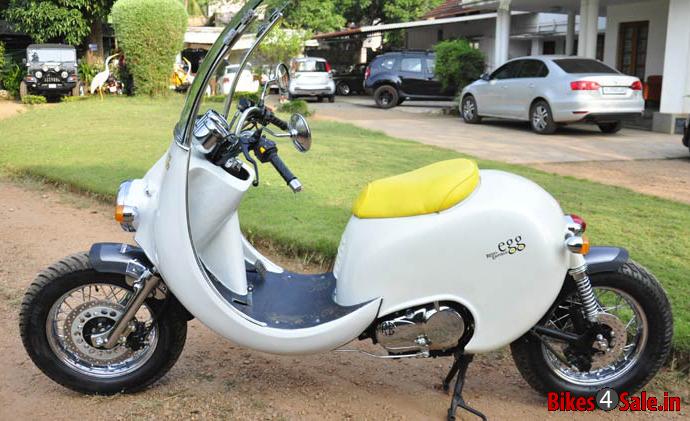
It’s been a little while since we heard from Dopz and the crew at Emporio Elabroazoni Meccaniche in Rome, but the boys are back with a new build, and they’re back in a big way with this stand-out custom CB400N, which has been given the moniker Brigante, which pretty much translates from the Italian as Rascal.


The bike follows the EE philospy of recycling and reusing original bikes and parts to give them new life and “new dignity”. We like that. It sounds kinda noble, and this bike does have a noble look about it.

“The donor bike was a Honda CB400N. We worked on the idea of doing a very short bike using and old mopped Piaggio Ciao seat.” The frame was shortened and reinforced to accommodate the stubby rear end with new shocks. The indicators were built in to the chopped ends of the frame to keep the seat clutter-free, while the rear LED light fitting is cleverly integrated into the cross bracing in the sub-frame that supports the seat spring.

The wiring was simplified and tucked into the frame tubes to keep it clean, but the guys are not fans of the empty rear subframe trend. “We do not love this trend of the empty hole from side to side under the seat, so we had fun reworking an old Kawasaki filter to hide the battery and fuses.” This is mounted to the left side with a round painted panel.

On the opposite site to the battery there is an old hip flask fitted – which isn’t there to sip by the roadside while you wait for the RAC, it’s actually for your tools – so you can fix it yourself and get home in time for a beer with your mates.

The tank is from an old Gilera, which has been re-worked to fit the frame. The Piaggio Ciao seat was recovered in leather, and the same leather was use to make a belt to affix the tank. The machine-gun exhaust is from a Triumph Scrambler which has been chopped and split into two exit pipes.

The rest of the mods include bates style light with a yellow lens, upgraded brake master cylinders, aluminium footrests, a flat handlebar, hand made fenders and a host of parts too numerous to list. The colour scheme was inspired by the original Gilera tank which has been graced with the Emporio Elaborazini spanner emblem, made from two opposing Es.

It’s a classy looking bike in its red & gold livery, with a clipped, truncated look, and it adds nicely to the range of builds from Dopz and the crew. There are plenty more builds from Emporio Elaborazoni on The Bike Shed Emporio Elaborazioni pages, on Facebook, or you can check them out on their own Website.







 The legendary BMW boxer engine, rugged dirt tyres, high wide bars and
a roll full of tools, just in case. Everything you could need to fulfil
a compulsive wanderlust. Hit the road and let the ride unwind an
adventure.
The legendary BMW boxer engine, rugged dirt tyres, high wide bars and
a roll full of tools, just in case. Everything you could need to fulfil
a compulsive wanderlust. Hit the road and let the ride unwind an
adventure.



















